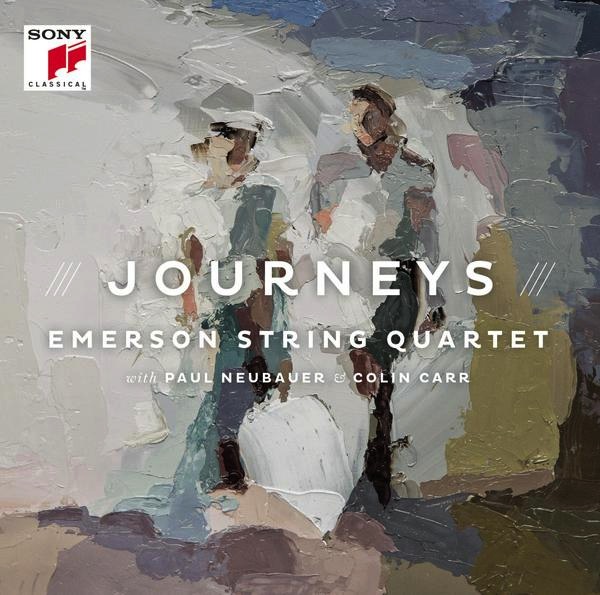
The Emerson Quartet’s incendiary Journeys
By Sebastian Spreng, Visual Artist and Classical Music Writer
By chance or coincidence, this CD came out on Egon Schiele’s birthday. I have instinctively and often associated Schiele’s landscapes, marked by turbulence and lyricism, with the Emerson Quartet’s style and execution. Those two traits appear to intensify in this album, an absolute capolavoro in its class. It is an end and a beginning of sorts, an endgame that signals the departure of the quartet’s outstanding cellist, David Finckel.
The disc is doubly significant not only because Finckel is leaving to follow other paths (he is replaced by Paul Watkins), but also because on this occasion the quartet has become a sextet. Paul Neubauer on the viola and Colin Carr on the cello make superb contributions. The hallmark of this preeminent American ensemble is more evident than ever in two works it often plays together but – oddly – had not recorded before now: Souvenir of Florence and Verklärte Nacht.
Whether they’re playing Bartók, Haydn, Janácek, Mozart, Brahms or Beethoven, Emerson’s musicians have been nothing if not high-voltage since their start in 1976. In this last performance with their illustrious cellist, the product is an incandescent, almost searing, wave of tenderness. It touches the most intimate fibers of our being and is of such stark magic that every phrase, every note, every pause seems to be the first and the last. Their dialogues and monologues form a song of six interlaced voices that can be listened to individually or as a cathartic and torrential chorus that seems to multiply infinitely. And here the exceptional quality of the audio bears noting.
Eloquent and masterly are ways to describe the pairing of the veteran Tchaikovsky with the young Schoenberg and two very personal pieces, composed barely ten years apart but illustrating two worlds and representing one thing: the confession of a tempestuous and conflicted artist, sublimated to the maximum degree. The passionate, discordant and somewhat Brahmsian Florence that the Russian composer depicts is a far cry from that supposedly idyllic city. It is a nostalgic look at his land, its folklore and his personal obsessions. The 25-year-old Viennese composer’s piece is the most romantic in his oeuvre, written when he was exhausting his musical resources and about to make the jump into atonality, into his own, very different, romanticism. Both pieces could be seen as Wagnerian in spirit (in fact, that’s the way they are captured in this recording) and both express the exuberance, decadence and asphyxia of the late 19th century with incendiary intensity.
Just as incendiary and paradigmatic is the ensemble’s performance, bearing the inexorable stamp of inevitable sunset and sunrise. Every (literal) attack of the strings – with a wise use of vibrato that plays with musical languages and secret codes – is followed by a silence as revealing as the sound, sometimes even more so. The abyssal beginning of that “transfigured night” – spine-chilling, panting, mournful, as Tristanesque in every way as the forest in Richard Dehmel’s poem – also seemed to evoke the starry firmament of Tuscany, echoing Schoenberg’s words: “the miracles of nature that have changed this night of tragedy into a transfigured night.”
In Tchaikovsky’s sparkling counterpoint and irresistible Slavic color and flavor, and in the hopeful walk of the couple Schoenberg portrayed as disappearing hand in hand, on the path to themselves, the Emerson Quarter delivers the final offering of this journey, a “transfigured memory” in which it once more bears out Aldous Huxley’s statement: “After silence, that which comes nearest to expressing the inexpressible is music.”
JOURNEYS, THE EMERSON QUARTET, SONY CLASSICAL 88725470602
Recent Content
-
Artsarticle ·
-
Artsarticle ·
-
Artsarticle ·
